The Great Beyond: Road Trip to Nunavut

A 3,295-km road trip shows why electrification is crucial—and how far we still have to go.
Luck. It’s something we attribute to many aspects of life, sometimes unfairly. But it’s the word I’d choose to explain how I ended up on a 3,295-kilometer (2,047-mile) road trip to Nunavut, Canada’s northern-most territory. In February. Rewind a few months and at a wholly unrelated event, I wandered into a conversation at precisely the right time. Why do it? Ostensibly, to highlight the abilities of a pair of Toyotas in weather most buyers will never have to endure. But also, simply because we can—the truest form of a road trip.
The end result was a fascinating and at times breathtaking view of Canada’s northern reaches. It was also an easier trip than I believe any of us expected, not just because of the reliability of our chosen rides, but the unseasonably mild weather.
The first leg: Orillia to Matagami
The adventure starts like many do: inauspicious. Friend and fellow journalist Dan Ilika and I make our way out of Toronto in a Toyota RAV4 Hybrid XSE, a blue example of America and Canada’s best-selling SUV, built just down the road in Cambridge. We’re beelining to Orillia to meet up with Mark Richardson, the man with the plan and two previous trips up this way under his belt. Joining Richardson in the Prius is German journalist Jens Meiners.
After a thorough raiding of the local Wally World, both vehicles are well-stocked with water, rations, and some rudimentary safety supplies. We top up both at the nearest gas station, zero out the odometers, and away we go. It’s a straight shot up Highway 11 pretty much right until we cross into Quebec, which is where we’ll do the bulk of the distance.
This first day serves as a great refresher course on these two vehicles. Netting a bit more time in the RAV4, it’s easy to see why Toyota moves half a million of these things a year in Canada and the USA. What’s more, the share of hybrid models is steadily increasing: over half in Canada in 2023, and a smidge above 43 percent down south. The RAV4 is fool-proof in operation, with simple controls, good visibility, and—crucially—comfortable seats. Toyota’s hybrid system is a finely-honed setup at this point, taking all guesswork out of the driver’s equations. It seamlessly shifts between gas and electric, or a combination of the two, without hiccups or lag, even as the mercury continues to dip.
There are just less instances of pure electric, resulting in the RAV4 blowing past its official 6.0 L/100 km (39 mpg) average by nearly a third. In its defense, we’re firmly in triple-digit territory for most of this section, and even if the weather is warmer than usual, we’re talking below freezing.
The Prius fares little better. This model is AWD too—standard in Canada, but optional in the US—and matches the RAV4’s official figure. Only the car’s own score should be 4.8 L/100 km (49 mpg), so it’s off by about a quarter.
As gas stations start becoming fewer and further between, we make a habit to top up frequently. The four of us regularly swap around driver pairings, share stories, and chat on the walkie talkies, helping a long day feel appreciably shorter. The sun sets a little past Amos, QC; we press on to Matagami a little slower, mindful of the wildlife and the only-okay illumination provided by the Bi-LED headlights of the Toyotas. We roll into the quiet town and make for the one open restaurant, where generous servings of poutine ensure a sound sleep.
The second leg: Billy Diamond Highway
We’re up and into the cars right as the sun starts to peak out Tuesday morning. Unbeknownst to us at the time, this will be the last time we see any other electrified vehicles for two days.
Stretching some 620 km (385 mi), the highway was built in the ‘70s to service the enormous hydroelectric projects planned further north. Formerly James Bay Road, the Billy Diamond Highway received its new name in November 2020, in honor of the former Grand Chief of the Grand Council of the Crees. There is just one service center, open 24/7, located 381 km (237 mi) up the road. Similarly, a small office sits beside the start of the road, where visitors can check in. In earlier times, folks would be handed a satellite phone to later confirm they made it to their destination.
The visions of treacherous roads I had dreamed up in my head couldn’t be further from reality. The road is well-maintained, framed by huge hills of snow but otherwise clear. Occasional washboard surfacing is one minor annoyance—it’s the white birds that prove a more consistent one. The ptarmigans are everywhere and, as they have little to contend with beyond logging trucks, are almost completely nonplussed by us sailing past. One isn’t so lucky, and makes contact with the RAV4’s grille in an explosion of feathers straight out of a cartoon. I’ve insisted on referring to the SUV as “Duck” due to its license plate, but it earns a new name after a second takedown on our return trip: the Ptarmigan Pterror.
The Prius has no such problems. Toyota’s newly crowned NACTOY and Canadian Car of the Year is deceptively good at gobbling up the winter miles, that super-slippery shape keeping the cabin quiet. The ride isn’t quite as cushy as the big blue softie, but the trade-off is a more positive front-end. If only our infrequent stops didn’t keep bugging out the wireless Apple CarPlay—a problem both vehicles persist with through the trip. It’s not like we have any signal for 90 percent of the BDH, anyway.
We roll into Chisasibi right as the sun is setting. It’s a laidback night, for tomorrow we tackle the final challenge.
Chisasibi and the Nunavut technicality
Look, it’s important to get this out of the way here: it is not currently possible to drive to Nunavut on a permanent road. Oh, we get close: nearly every island in James Bay is technically Nunavut territory, and the bay itself is frozen solid. The road west out of town terminates at a small park, with only a small grade down to the ice. If we had a Tacoma, a cleared path down, and an almost complete lack of concern about making a very expensive phone call to Toyota, we could have done it.
Instead, we settle for a short ski-doo trip over, as local Steven Sam pulls us in a rudimentary wooden trailer. We make land on Sealskin Island, two Toyota headrests in hand, and admire the stark landscape. There are no seals here, only hearty moss and plenty of driftwood. Sam suspects the ice is only about three feet thick instead of the typical five. Climate change is real.
It’s a sentiment echoed by community elder Eddie Pashagumiskum. He grew up a couple hundred kilometers east of here—land that is still his, though he estimates around 80 percent is under water at this point. In addition to acknowledging climate change, Pashagumiskum laments the other challenges the northern community faces: the gradual loss of culture, and the talent draw as many younger folks move south to find jobs.
The electric trade-off
That evening, we drive to the reason for local land flooding all those decades ago: the massive Robert-Bourassa Reservoir. The eponymous hydroelectric generating station along with the La Grande-2-A station, are together the largest of their kind in Canada, and generate nearly a quarter of Quebec’s total electric capacity. The dam looms large as we approach, and it only gets bigger. The causeway looks like a play area for gods, an 100-meter trough right through the wilderness.
There are no electric car chargers here. The same is true in Chisasibi—a community that literally sprung into existence in response to the dam’s impact on the local environment. The cost to create charging infrastructure here would be prohibitive—the distances between locations, hardly tenable. The more typical -30 degrees C weather of this time of year would demolish EV ranges.
Yet Canada, like many parts of the world, is targeting a near-total ban on combustion engines in a little over a decade. It’s easy to toss out stats, such as 90 percent of Canadians live within 100 miles of the US border, but the sheer size of the country means communities like Chisasibi are often overlooked in idealized electrified visions.
The irony is not lost on us. We’ve burned through around 480 liters (125 gallons) on this round trip. We’ve heard the stories of the people, seen the remoteness that makes pure electric simply impossible short-term. The entire trip saw temps well above average; we came back to Toronto the same Friday the city broke an 80-year-old record for warmth. The ice, it’s only three feet deep.
Both the Prius and RAV4 dramatically improve consumption (and reduce pollution) over gas-only equivalents. Toyota argues hybrids are the way forward, typically alongside a swipe at pure EVs—and I get it, that short term, hybrids make a significant improvement with little sacrifice. Even if enough rare materials exist to switch over the entire global fleet of automobiles to pure electric, there will be remote communities that will struggle to adapt. If anything, this road trip has reinforced the idea that a versatile, adaptable electrification plan is required, one that leaves nobody behind. Luck alone won’t save us.
Become an AutoGuide insider. Get the latest from the automotive world first by subscribing to our newsletter here.

Kyle began his automotive obsession before he even started school, courtesy of a remote control Porsche and various LEGO sets. He later studied advertising and graphic design at Humber College, which led him to writing about cars (both real and digital). He is now a proud member of the Automobile Journalists Association of Canada (AJAC), where he was the Journalist of the Year runner-up for 2021.
More by Kyle Patrick




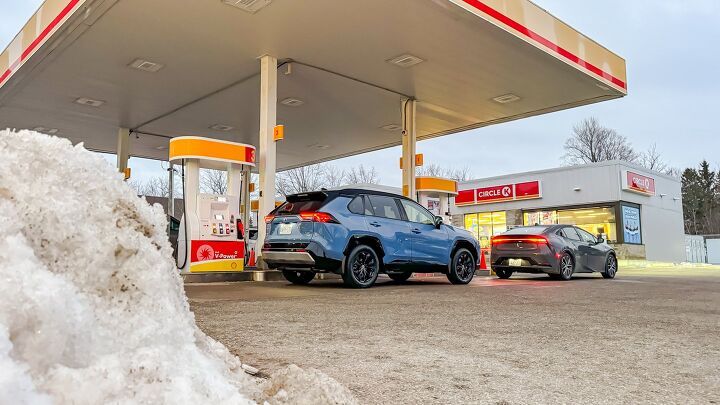



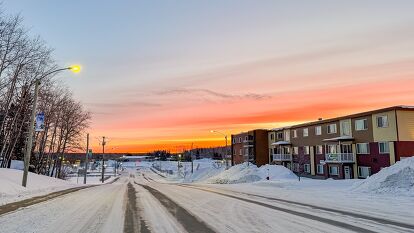









































































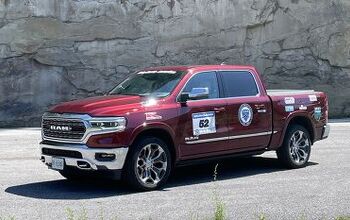

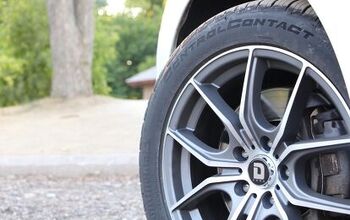
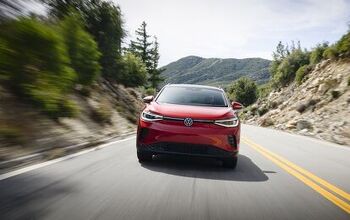











Comments
Join the conversation